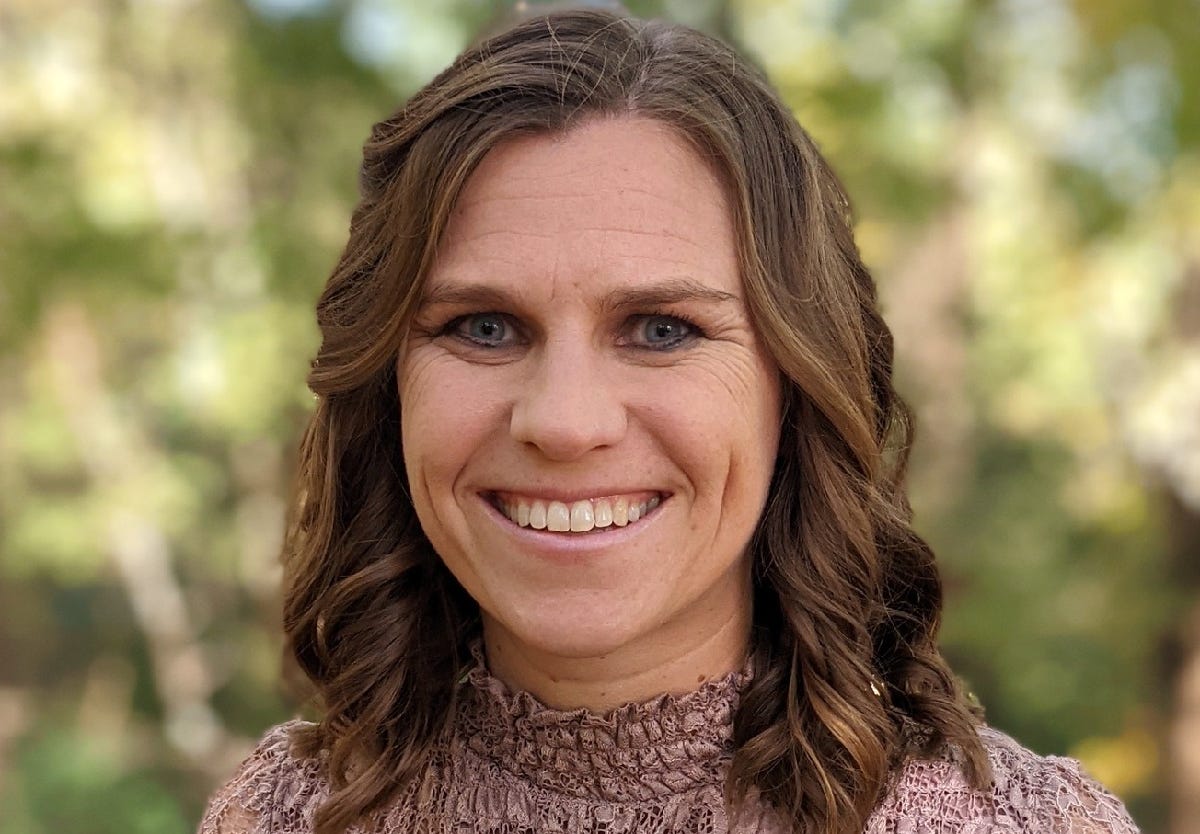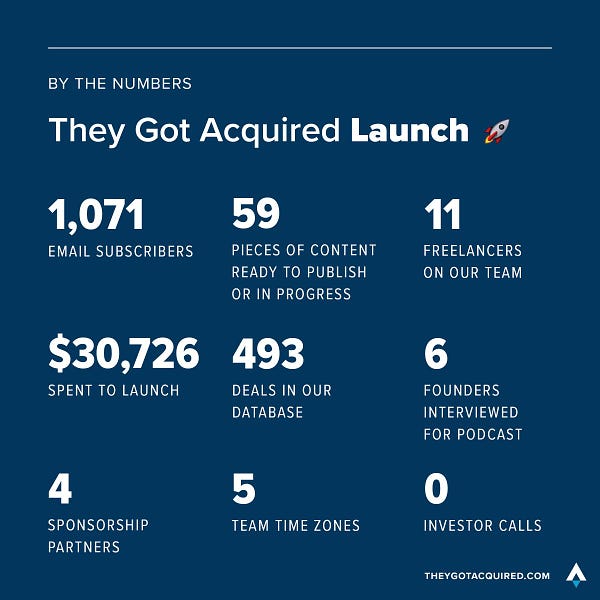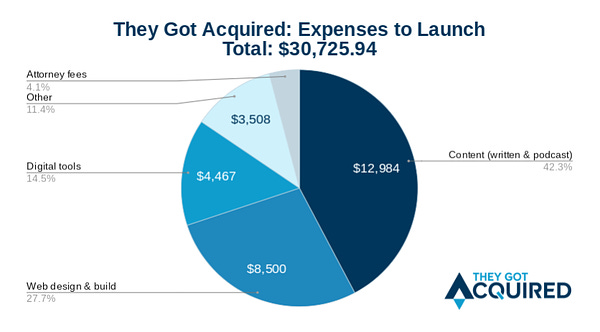How a serial media entrepreneur launched a new MVP
Alexis Grant walks us through how she launched They Got Acquired.

Welcome! I'm Simon Owens and this is my media newsletter. You can subscribe by clicking on this handy little button:
Let’s jump right into it…
How a serial media entrepreneur launched a new MVP
I interview a lot of content entrepreneurs for this newsletter, and many of them experienced a similar trajectory:
They started making content as a side gig – whether it was a YouTube channel, podcast, or newsletter.
Over time, they developed an audience while continuing to refine their content strategy. They also began experimenting with monetization models.
Once their audience and revenue growth hit a certain threshold, they quit their jobs and focused on scaling their operations.
That’s not the approach Alexis Grant took when she launched her latest media venture, They Got Acquired. After all, she was an experienced entrepreneur, having grown and sold several businesses, so she already had a firm handle on what strategies would and wouldn’t work. She also has a family to help support, which meant she wanted a clear and direct path to profitability.
So by the time she launched They Got Acquired earlier this year, she had already spent months laying the groundwork. This involved everything from hiring writers to designing a website to even building a pre-launch newsletter list. In an interview, she walked me through how she went about this process and what new lessons she learned along the way.
Can you give me a one-paragraph elevator pitch of what They Got Acquired is and what kind of content you produce?
They Got Acquired is a media brand that helps entrepreneurs build and sell companies. Not the entrepreneurs who exit for hundreds of millions of dollars; we spotlight founders who’ve achieved “small” but life-changing exits of 6, 7, or low-8 figures. We tell those stories through our newsletter, podcast, and website, and also offer resources and data on how to maximize the value of your business and navigate a sale.
A lot of the bootstrapped media companies that I profile in this newsletter launched very informally and then figured out what they were doing as they went along. You were very deliberate about planning out your launch ahead of time and even spent a significant amount of money preparing everything. Why did you do all that upfront work, as opposed to just launching a minimal viable product and building from there?
I consider what we launched to be an MVP, so I suppose it’s all about your frame of reference! And we are still very much figuring things out as we go.
But there were a few things I wanted to have in place at launch, based on my experience building media companies.
One was the beginning of an email list. I didn’t want to launch to crickets, and I knew that building up even a small list would help us get traction when we pushed the site live. I had a goal of having 1,000 email subscribers by the time we launched, and we just made that. We used a simple Carrd.co landing page to collect emails before the site went live.
Second, we needed a branded website that felt professional. It can be hard to get people to take you seriously as a bootstrapped brand, and I knew that how we presented ourselves would go a long way toward getting that initial traction.
Finally, I wanted some content in the hopper when we went live, which required me assembling a team of reporters ahead of launch. We had 59 pieces of content either live on the site or ready to go when we launched. I took that approach mostly to minimize stress, so we wouldn’t find ourselves with a live site we were scrambling to populate.
These two tweets help visualize the effort that went into launch:




How did you make sure that your launch made a splash? You set some goals for a certain number of newsletter subscribers before launch day and also managed to get a write-up in The New York Times. How did you execute on that?
The email list, New York Times write-up, and any other splash was a result of sharing the process of building the company ahead of the launch.
I wrote about what I was building on Twitter, on a small personal newsletter list I’d built with precious projects, and in communities around the web like Reddit, Kern.al, and Slack/Circle/Facebook groups. And perhaps most importantly, as subscribers joined the They Got Acquired email list through the pre-launch landing page, we emailed that list to let them know what we were up to and what they could expect at launch.
This post details how we got the first 1,000 email subscribers. It was a scrappy, organic effort, with the goal of attracting high-quality subscribers to serve as a strong foundation.
Did you feel like it was important to have a business model decided on prior to launching?
Yes. One mistake I’ve made in the past — and seen other content types make — is to focus too much on the great content and value we can provide, and not enough on how the business will make money.
I also wanted to try a business model that was new to me, something that would help me learn. At They Got Acquired, we’re monetizing by selling insights from and — eventually — access to our database. We’re compiling acquisitions of online businesses where the deal size is less than $50 million. We are the first to do this! So far we have about 1,200 deals that meet our criteria.
However, even going in with this monetization plan, I’m open to it changing. In fact, it has already changed in some ways, in that we’re leaning on sponsorships/advertising earlier than I’d envisioned. In the beginning I actively avoided opportunities there to focus on building the database as a long-term play. But I quickly realized just how much interest there is in reaching this type of entrepreneurial audience, so now we’re selling sponsorships to cover operational costs in the early days.
It’s convenient — and feels like a safety net — that there are lots of ways to monetize media brands. Because what I feel most confident in is growing an audience and a brand, and even if our initial monetization plans don’t pan out for whatever reason, we can monetize this audience in another way.
I know it's still early on, but how have results squared with expectations? Any disappointments?
Overall, the reception of the brand and the information we share has been tremendous. For that reason alone, I feel more confident now than when I launched the project that this will work.
Sponsorships have gone better than I expected; there’s been a lot of demand.
Two disappointments. I can’t say either was unexpected, so maybe these are more of challenges:
First, email list growth is slower than I’d like. We launched in February with 1,000 subscribers, and now in late April we have 2,100 subscribers. That’s all organic — no paid media yet — so it’s a high-quality list, which was intentional. But it’s slow going. I need to hire someone to help with this because I’m not spending enough time on it to make a meaningful dent.
Second, finding the right reporters has been challenging. Growing content teams is one of my core competencies, so I’m aware of how time consuming it can be to find the right people… and yet I wish I wasn’t spending so much time and effort vetting writers. If any business reporters are interested, here’s what we’re looking for.
More generally — and this has been my biggest learning so far – I’ve found it challenging to transition back to a lean, bootstrapped mentality after having a large team and budget at my last gig (The Penny Hoarder). I see a clear picture of what needs to happen to grow this business, yet time and spending restraints require moving more slowly than I would like.
Speaking of expectations, where do you want to be at the one-year mark? When do you project you'll be drawing a salary you're comfortable with?
My goal by the end of Year 1 is to be profitable, even if it’s only by $1; I want us to be bringing in enough revenue to cover expenses.
Come July, I’ll set more goals for the end of the year. But it felt too far off to do that in February when we launched. We have learned a lot already that will inform the rest of the year.
I hope to draw a salary by the end of Year 2, though my tendency is to reinvest in growth, so we’ll see where we land. I’m leaning on funds from my last business sale during this time of investing rather than earning, as well as on my husband’s income; he runs an online business as well.
You’re publishing a highly produced, narrative podcast that must be significantly more expensive and time-consuming to make than the typical Q&A. Can you talk about why you went that route?
Some days I can’t believe we are telling such beautiful stories because I was hesitant to do a podcast in the first place. But audio is how so many of us consume information now, and I felt it was the right medium for the brand.
Initially I’d planned to hire someone else to host it, because I didn’t think I could work on a podcast and build a business at the same time. But our producer convinced me it would be good for building trust in the brand to have my voice heard, and she’s right.
We chose the narrative route for two reasons:
First, to hide my newbie audio skills as I learn the ropes. Our producer hides my mistakes and makes me sound like I know what I’m doing.
Second, I decided that if we were going to spend time and money on a podcast, we had to do something to make it stand out. I feel fatigue over the number of Q&A shows I listen to, so I figured other listeners might feel that way, too. This is our way of creating something different — and hopefully better — than what’s already out there.
Give it a listen! Search for “They Got Acquired” in your podcast player.
Are you open to follow-up questions or connections from readers?
Sure. I’m at alexis@TheyGotAcquired.com or @alexisgrant.
Want to pursue a career in media but don't know where to start?
[Sponsored]
Get best-value counseling with a trained college and career mentor, who will help you with everything from picking the right colleges, finding money for tuition, applying to scholarships, and picking the right career.
Transizion uses data to give you the best college and career mentorship . Reduce your stress and confusion, cure your anxiety, and get expert help through the Transizion platform.
Save money and time with the guidance of a Transizion mentor. We'll connect you with a trained professional who will help you navigate life's important college and career decisions.
Quick hits
After a year of post-pandemic optimism, everyone's starting to feel pessimistic about media businesses again. [The Rebooting]
First Netflix, now The Athletic: companies that once claimed that they'd never introduce advertising are starting to go back on those promises. [Front Office Sports]
The "pivot to video" wasn't a disaster for everyone. [AdWeek]
A great breakdown of one of the most innovative YouTube channels to emerge in recent years. [Colin & Samir]
Should publishers brace for an ecommerce slowdown? [Medialyte]
ICYMI: This TV podcast generates $4,000 a month on Patreon
Dutch TV’s Wie is de Mol has a rabid fanbase, and these podcasters capitalized on that fandom.
Welcome to all my new subscribers!
For some reason I’ve seen a huge uptick in new signups over the past few weeks, and chances are that many of you are unaware of the best kept secret in media: my private Facebook group. That’s because I ONLY promote it at the bottom of my newsletter to ensure that it’s exclusively populated by media industry obsessives like yourself. We get up to some great discussions every day. You can join here: [Facebook]
Do you like this newsletter?
Then you should subscribe here:
Simon Owens is a tech and media journalist living in Washington, DC. Follow him on Twitter, Facebook, or LinkedIn. Email him at simonowens@gmail.com. For a full bio, go here.


